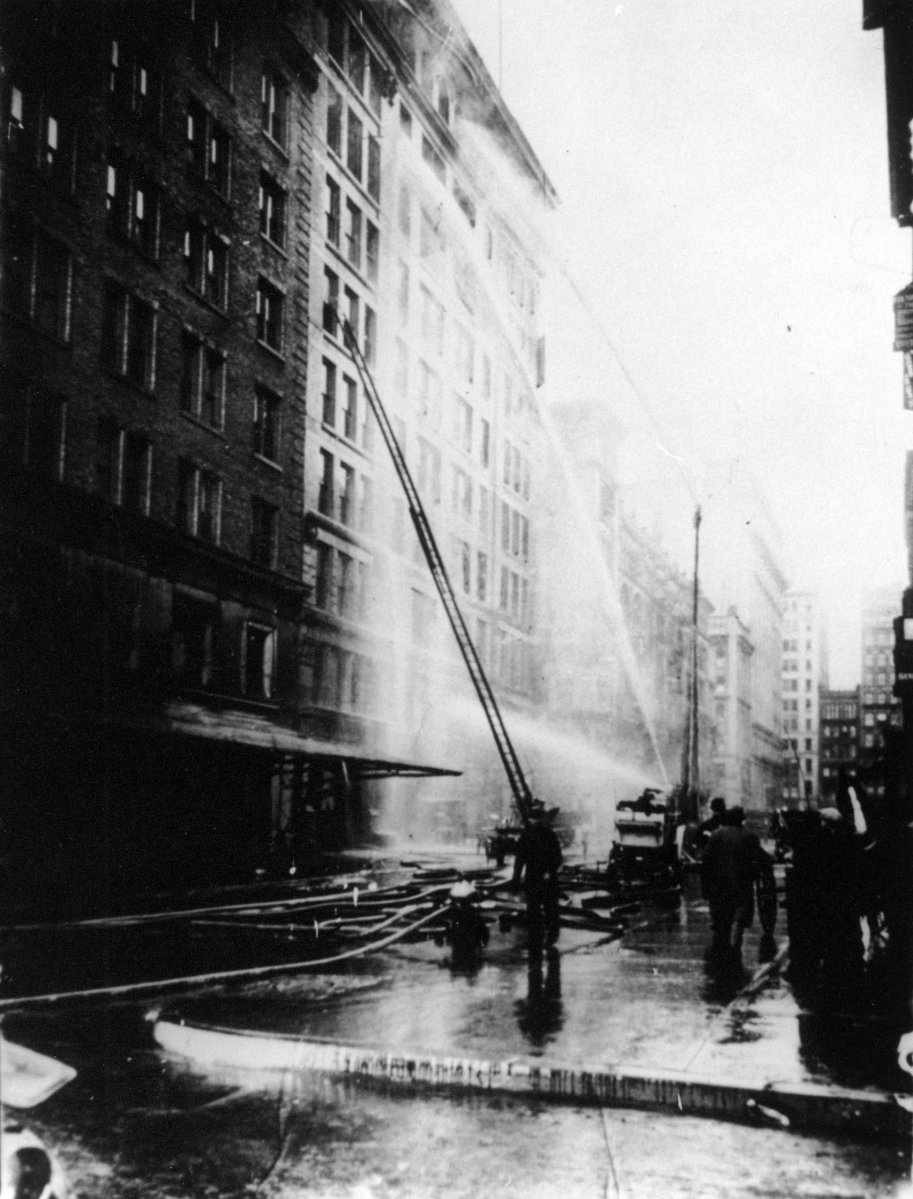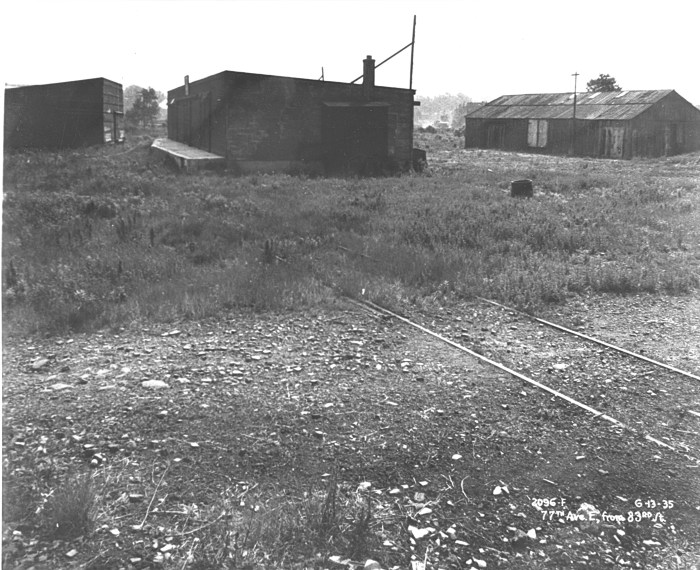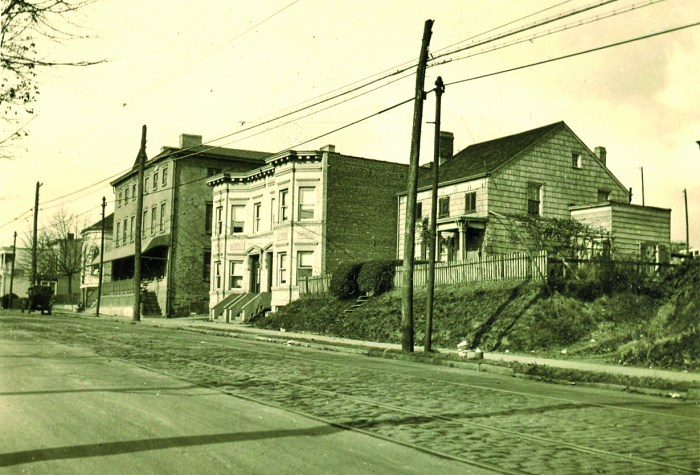Every year, prior to the COVID-19 pandemic, Christ the King High School in Middle Village played host to a commemoration of the Triangle Shirtwaist factory fire in Manhattan — one of the worst tragedies to hit New York City in the 20th century.
The longtime chairman of Christ the King’s board of directors, former state Senator Serphin Maltese, along with his brothers Vincent and Andrew, organized the annual memorial service. The Maltese brothers lost three members in the tragic blaze — Caterina, their grandmother, and Rosaria and Lucia, two aunts.
“We’re hopeful that this is a rejuvenation of their memory. If we honor their memory, we’ll ensure that nothing like that ever happens again,” Serphin Maltese said during the 2011 ceremony that marked the centennial anniversary of the horrific blaze.
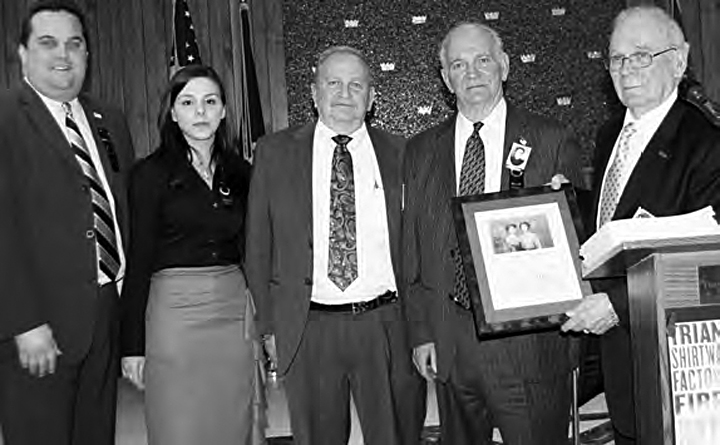
The tragedy occurred on March 25, 1911, 111 years ago this month. The victims of the tragedy were mostly immigrant workers who endured horrific conditions to earn a paycheck for their families. It was those horrific conditions that wound up contributing to their deaths on that fateful day — and spurred a modern labor movement to ensure future tragedies could be avoided.
Cemeteries across Queens, including All Faiths (nee Lutheran) and Mount Zion Cemeteries in Middle Village and Maspeth, respectively, serve as the final resting places for some of the 146 garment workers who lost their lives.
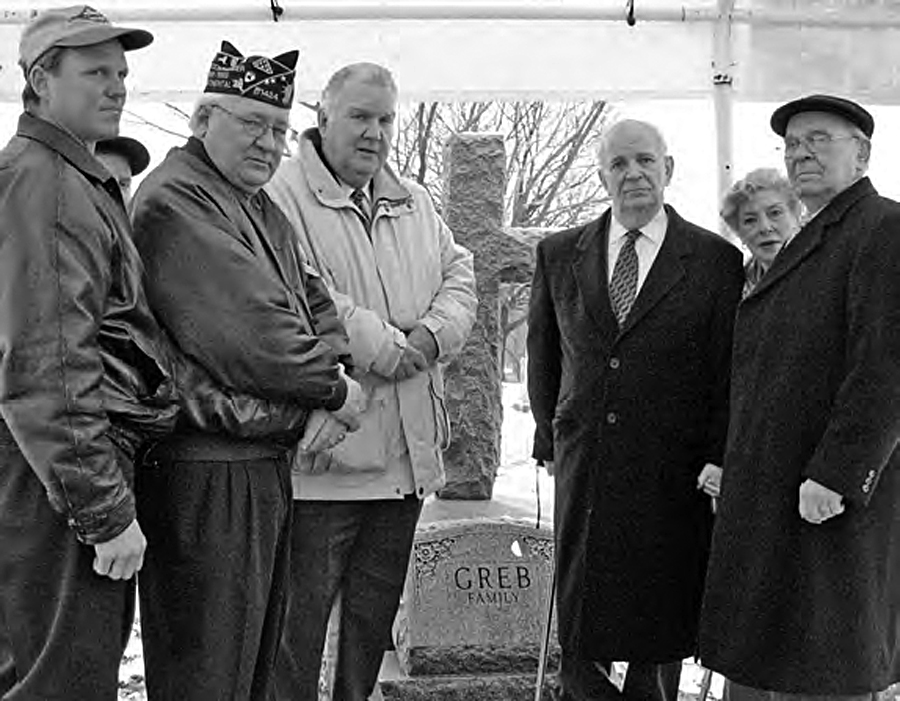
Before the horrific events of Sept. 11, 2001, the Triangle Shirtwaist factory fire was considered by some to be the darkest day in the history of New York City.
The terrorist attacks on the World Trade Center, 20 years ago this September, and the tragic sweatshop fire in 1911 bore one particularly morbid resemblance.
In both incidents, numerous victims — trapped by flames many stories above ground and with no path to safety available to them — chose to leap to their deaths rather than succumb to the heavy smoke and fire that surrounded them.
Newspaper accounts of the Triangle Shirtwaist fire described the horror and shock expressed by onlookers as they witnessed body after body fly out of the upper floors of the factory to the sidewalk below.
Ninety years later, that same horror and shock was felt by the thousands of New Yorkers near the World Trade Center who saw people take fatal plunges out of the burning Twin Towers.
Although the nature of the attacks on the World Trade Center left so many victims hopelessly trapped, many of those who died in the Triangle Shirtwaist fire had perished needlessly — as the exits they tried to use to get out of the burning building had been locked from the outside.
It was one of many safety hazards commonplace among American industry at the time that would only be remedied years later, spurred by the outrage of New Yorkers and labor leaders in the wake of the deadly inferno.
The horrific timeline
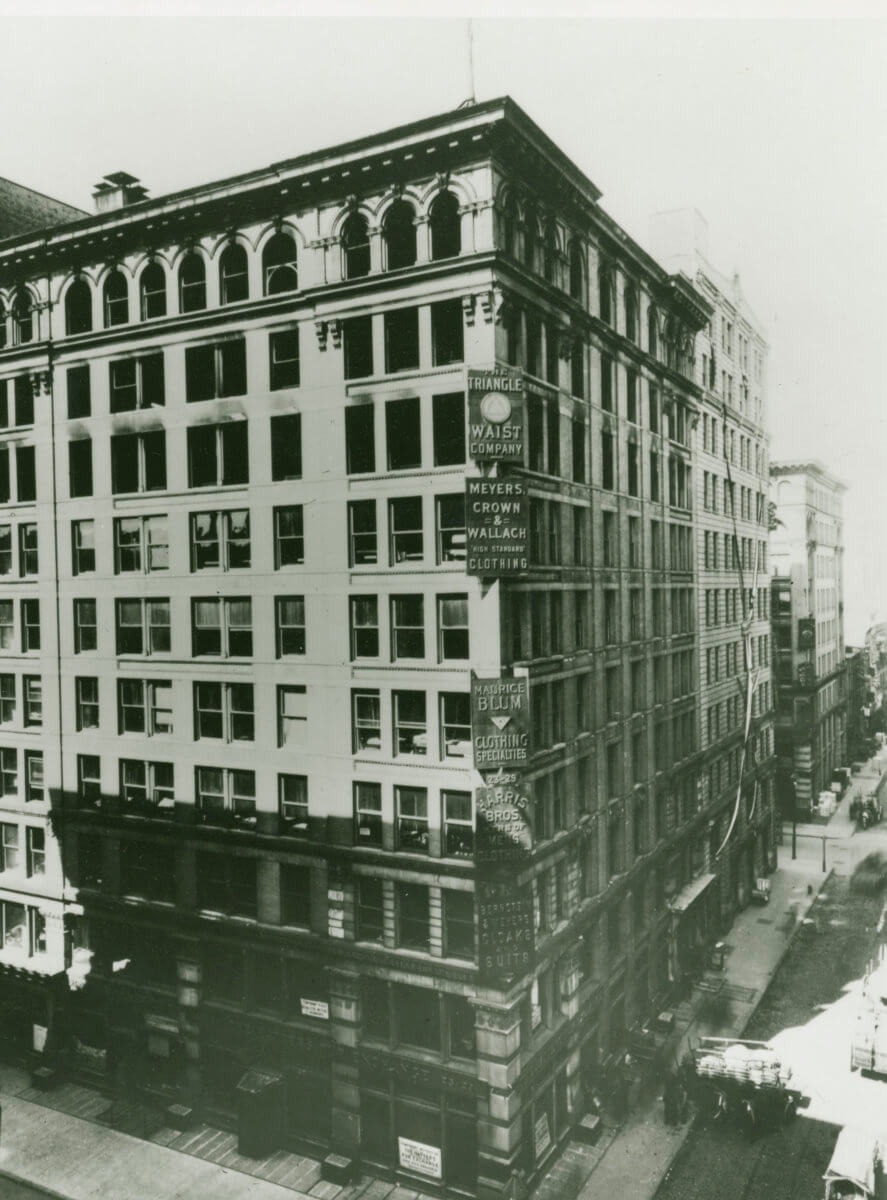
The Triangle Shirtwaist factory began at around 4:45 p.m. on Saturday, Mar. 26, 1911 inside the upper three floors of the Asch Building at the corner of Greene Street and Washington Place in Greenwich Village. Inside, 500 workers — mostly teenage, immigrant girls — were hastily preparing shirtwaists (blouses) to meet their daily quota before the close of business.
The actual cause of the fire remains remains unknown to this day, but it is believed that someone on the eighth floor dropped a match or a smoldering cigarette into a pile of fabric scraps.
Seconds later, the fire quickly engulfed the floor and quickly grew out of control after spreading to the many piles of cloth that lined the factory. Quickly, flames engulfed the ninth and 10th floors.
Many workers tried to flee from the burning factory stairwells, but were unable to as the exits had been locked from the outside by the factory owners. Others inside the 10th floor of the Asch Building managed to reach the rooftop and ran to safety on the adjoining roof of New York University.
Fire Department units, some with vehicles and others by horse and buggy, rushed to the scene. Workers inside the building did their part to try to extinguish the flames, but the inferno moved and expanded too fast to keep up.
To make matters worse, the water pressure in the fire hoses they used was incapable of quenching the flames.
The jumpers
The fire proved to be a futile task for the FDNY as well. Even though the department had the most modern firefighting equipment of its time, its tallest ladder reached its limit two stories shy of the eighth floor.
Scores of the trapped workers died from smoke inhalation or were burned to death. About 20 women did manage to escape through a rickety fire escape on the eighth floor, but others died when the fire escape — later found to have had rusty metal supports — failed, sending them plunging to their deaths.
With the last means of egress gone and the intense flames continuing to consume their factory, those stuck inside the burning building ran for the windows, desperate for air. They were faced with a grim decision — either burn or suffocate from the blaze, or to avoid the suffering by leaping out of the buildings.
Either way, they were doomed to perish.
Seconds later, bodies of the young female workers began falling from the upper floors of the Triangle Shirtwaist factory. Crowds of onlookers gathered near the factory and helplessly watched one worker after another take fatal plunges; some of the workers were observed leaping hand-in-hand in groups of three or four.
Among the eyewitnesses to the horror was Frances Perkins, who would later become the first female Cabinet member, serving as Secretary of Labor for President Franklin D. Roosevelt.
“The nets were broken,” she wrote in her journal. “The firemen kept shouting for them not to jump, but they had no choice; the flames were right behind them, for by this time, the fire was far gone.”
The horror finally ended at around 5:15 p.m. when the last body fell from the Triangle Shirtwaist Factory.
In just 45 minutes, 146 people had lost their lives in the inferno considered to be the worst industrial disaster in the city’s history.
Some firefighters inspecting the damage afterward found numerous corpses inside the factory charred beyond recognition.
A city mourned
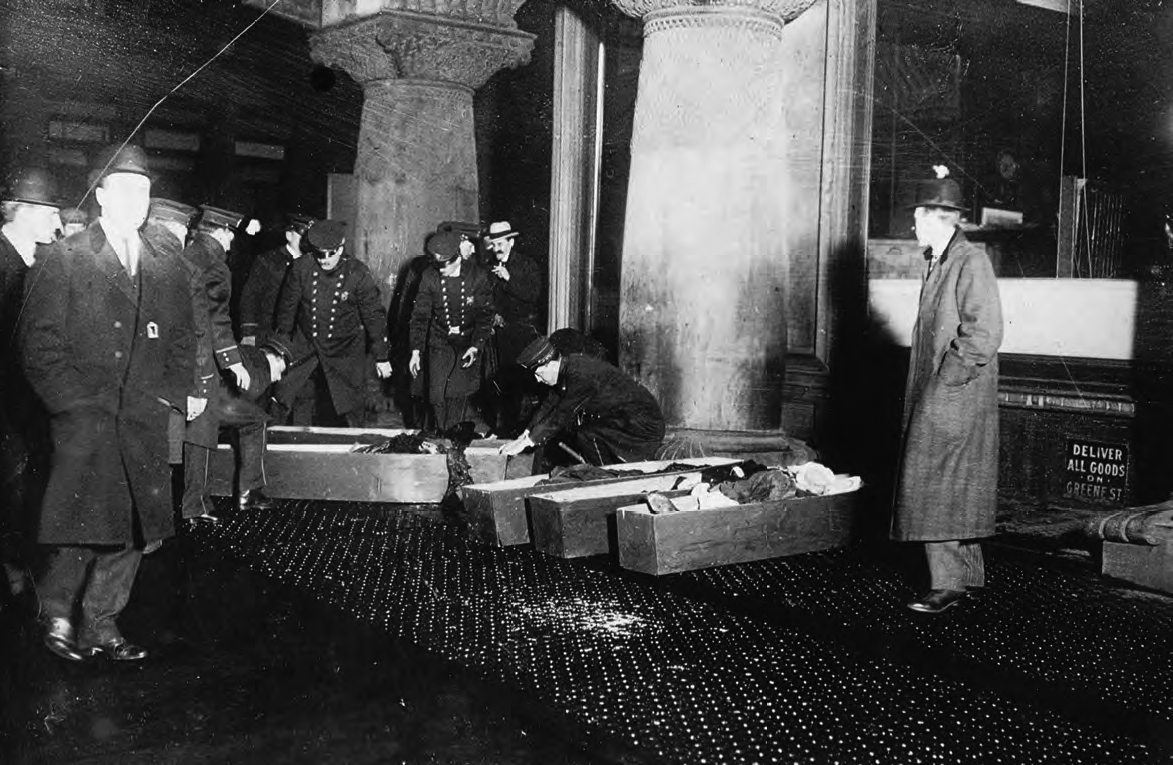
All but seven of the dead workers were eventually identified by relatives through a temporary morgue set up near the East River. Those whose remains were not identified were given a proper burial at a mass funeral held on April 5, 1911, in which hundreds of thousands of New Yorkers — moved by the sorrowful event — participated.
Prior to the tragic inferno, labor organizers tried to raise awareness about the factory’s working conditions. Though four small fires had occurred at the site in the previous year, Triangle’s owners — Isaac Harris and Max Blanck — failed to improve working conditions. They had claimed that the building was technically “fireproof” under existing codes.
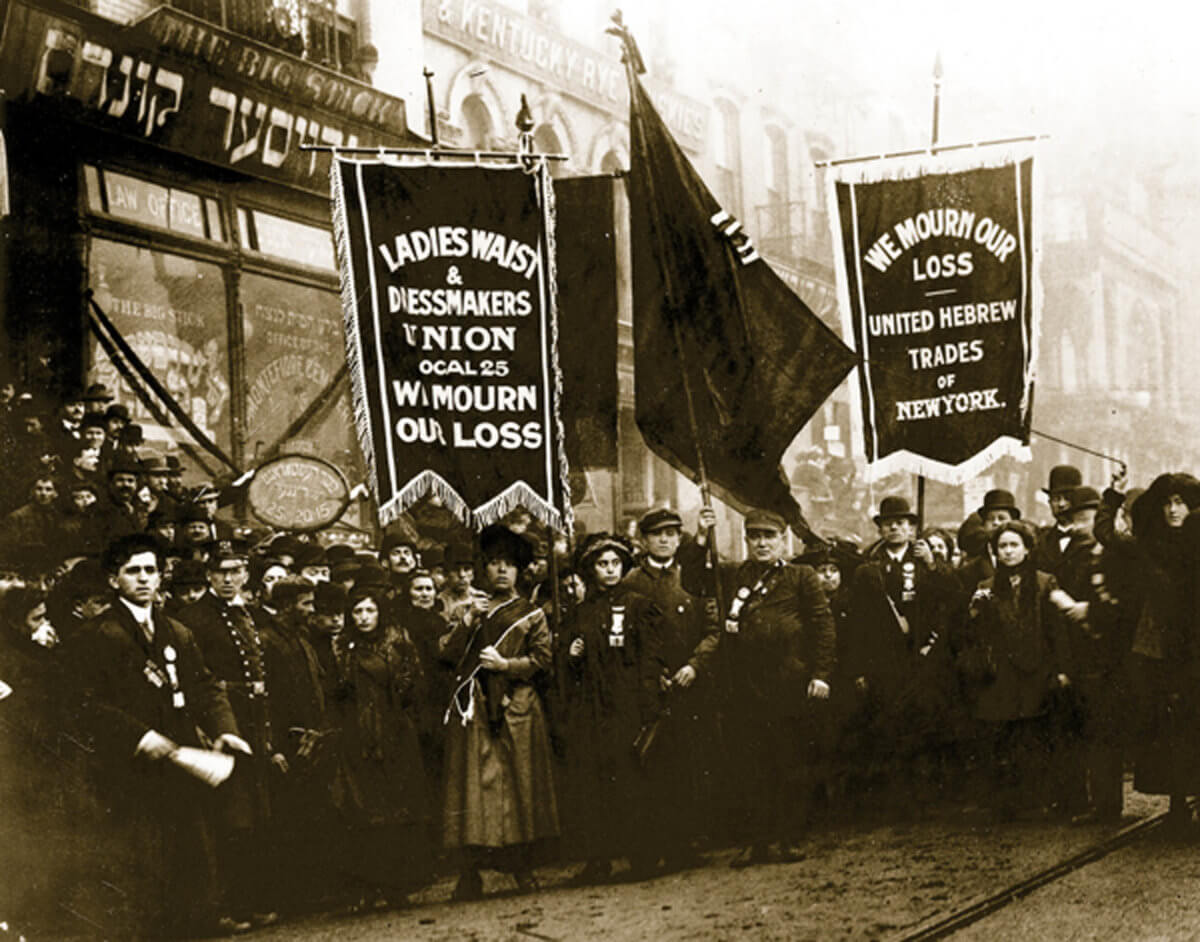
Both Harris and Blanck were eventually put on trial on manslaughter charges for the deadly blaze, but were ultimately acquitted. In the end, prosecutors were unable to prove that they knew that the exit doors to the factory had been locked.
Despite the horror of the Triangle Shirtwaist fire, the tragic event helped galvanize the labor movement in New York City, helping to bring about political change and new rules improving worker safety in all industries.
Sources include the March 31, 2011, issue of the Ridgewood Times, The Villager and “New York: An Illustrated History,” by Ric Burns, James Sanders and Lisa Ades (expanded edition, 2003, Alfred A. Knopf). It is the companion work of Burns’ PBS series, “New York: A Documentary Film.”
***
If you have any remembrances or old photographs of “Our Neighborhood: The Way It Was” that you would like to share with our readers, please write to the Old Timer, c/o Ridgewood Times, 38-15 Bell Blvd., Bayside, NY 11361, or send an email to editorial@ridgewoodtimes.com. Any print photographs mailed to us will be carefully returned to you upon request.

